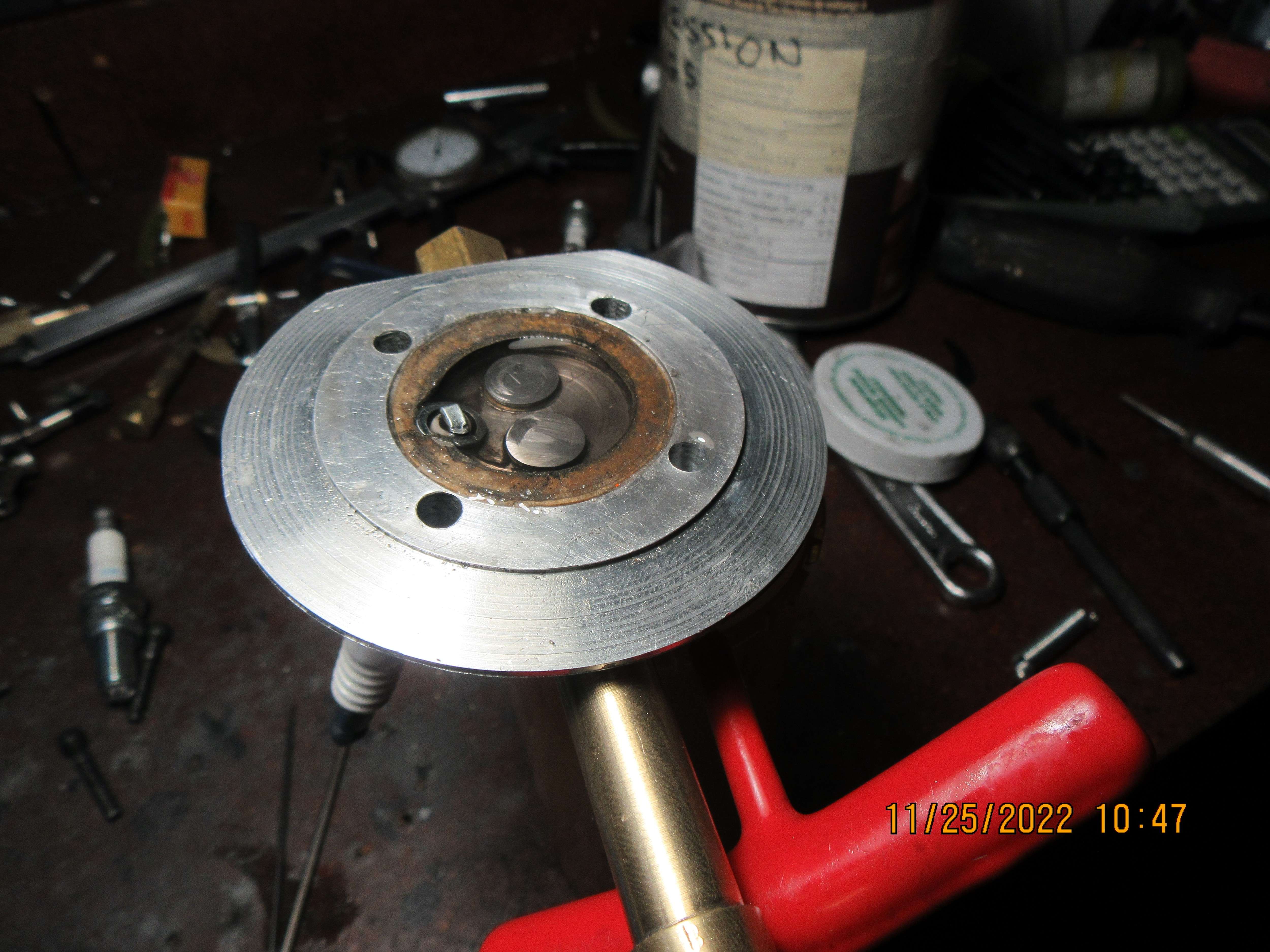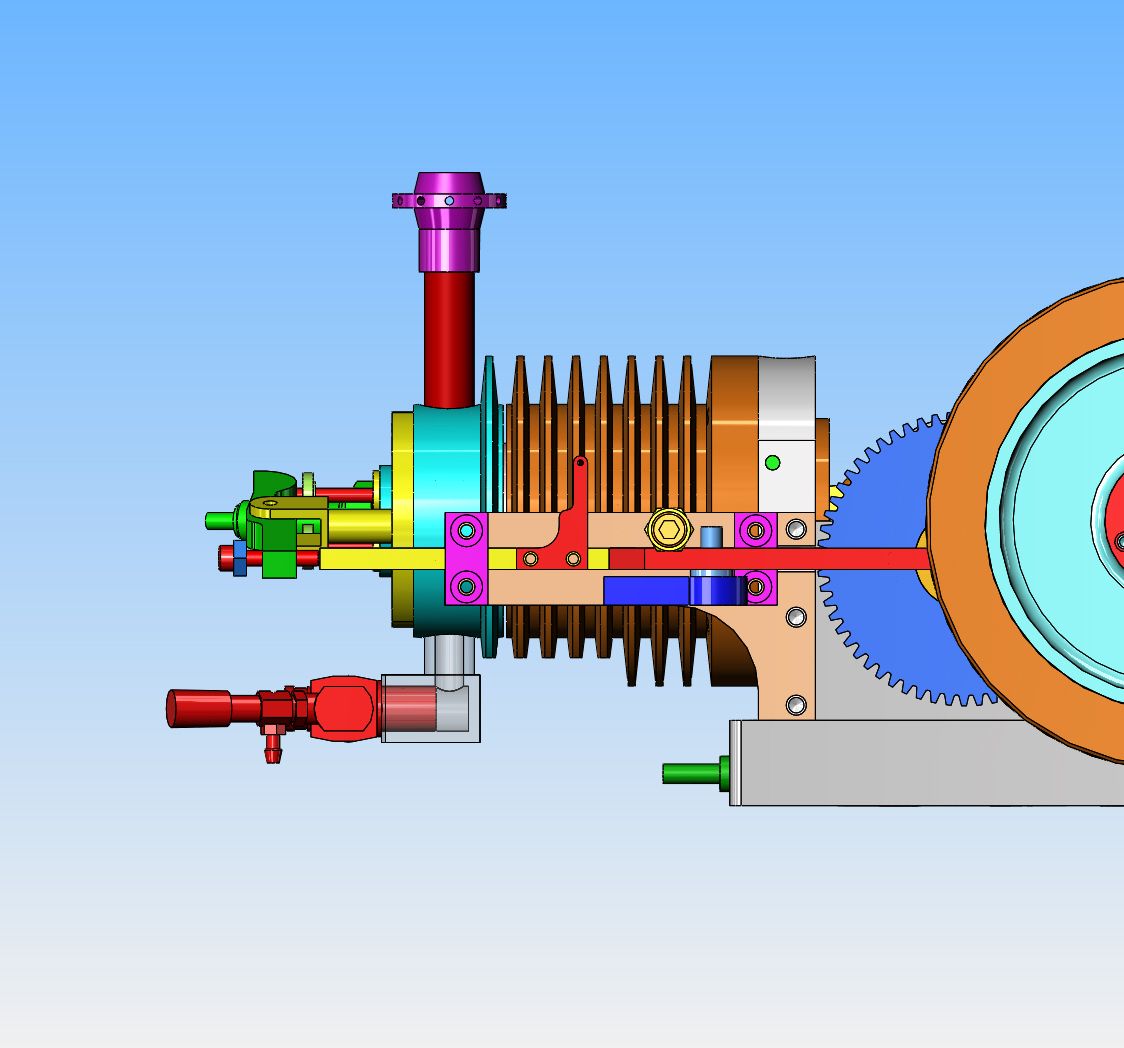Gordon--I find it to be a fairly good method of checking for how good a seal the valve has with the seat. This time it did anyways. My engine has good compression now, and has a very obvious "bounce back" when you try to spin it with the flywheels. It has been a frustrating day. Good spark, good compression, good fuel---but no protracted runs. Many "almosts", but nothing longer than about 20 seconds. Although the engine fires and tries to run on it's own, it is running very slowly and I don't know why. Adjusting the spark timing doesn't seem to have any great effect. Most of these hit and miss engines will take off and rev so high they scare you half to death if the miss mechanism is disabled. I spent the afternoon with a different gas tank, trying it at different heights in relation to the carb, but didn't get anywhere with that. Tomorrow I will try it with a purchased carburetor, because I'm running out of things to try.---I always use cold rolled steel for my valves, and have never had a problem with it.





![DreamPlan Home Design and Landscaping Software Free for Windows [PC Download]](https://m.media-amazon.com/images/I/51kvZH2dVLL._SL500_.jpg)




